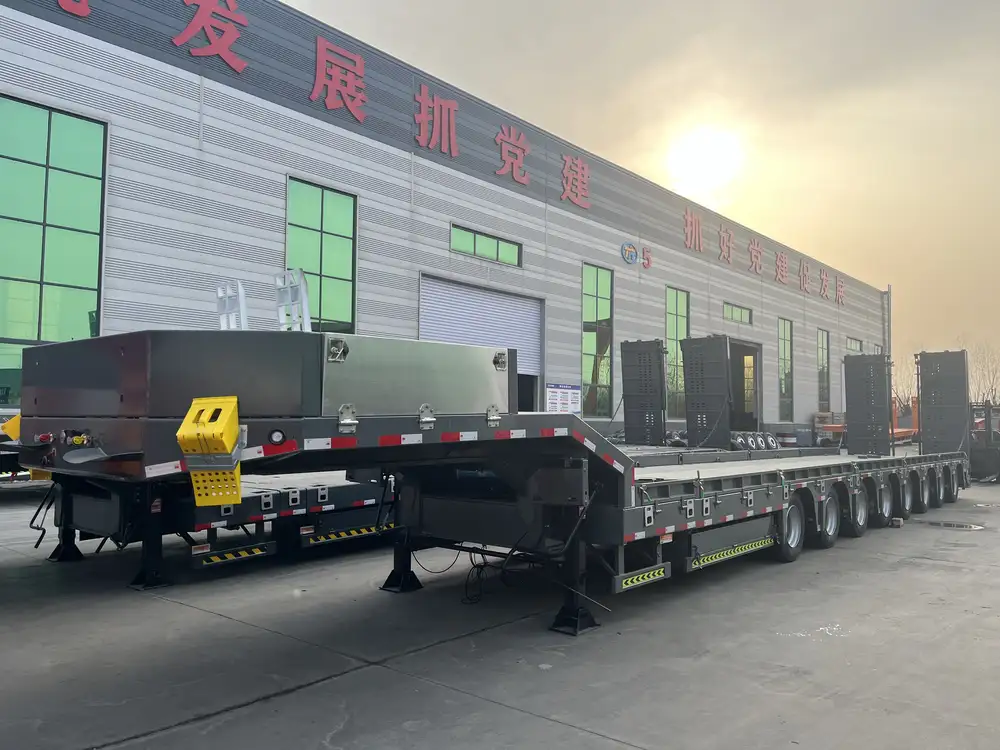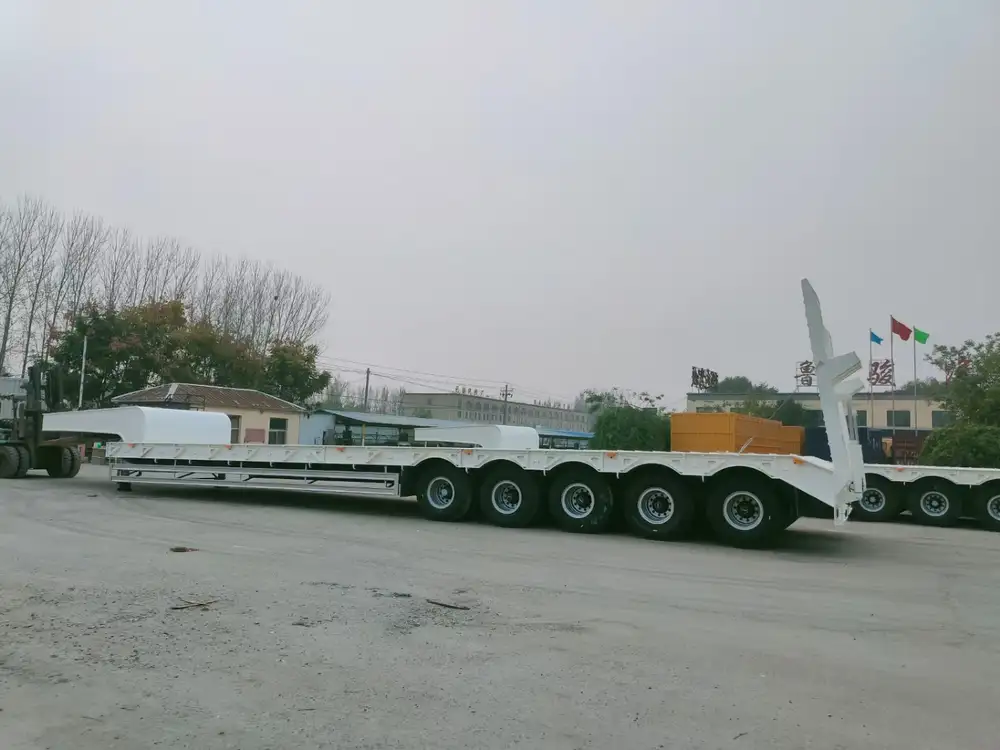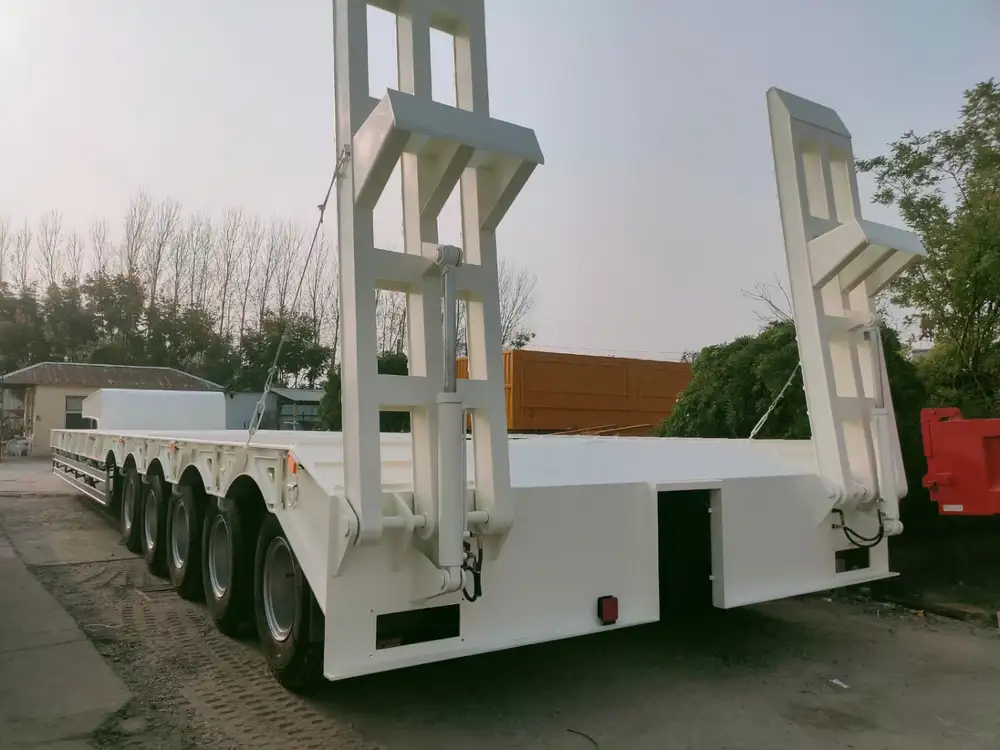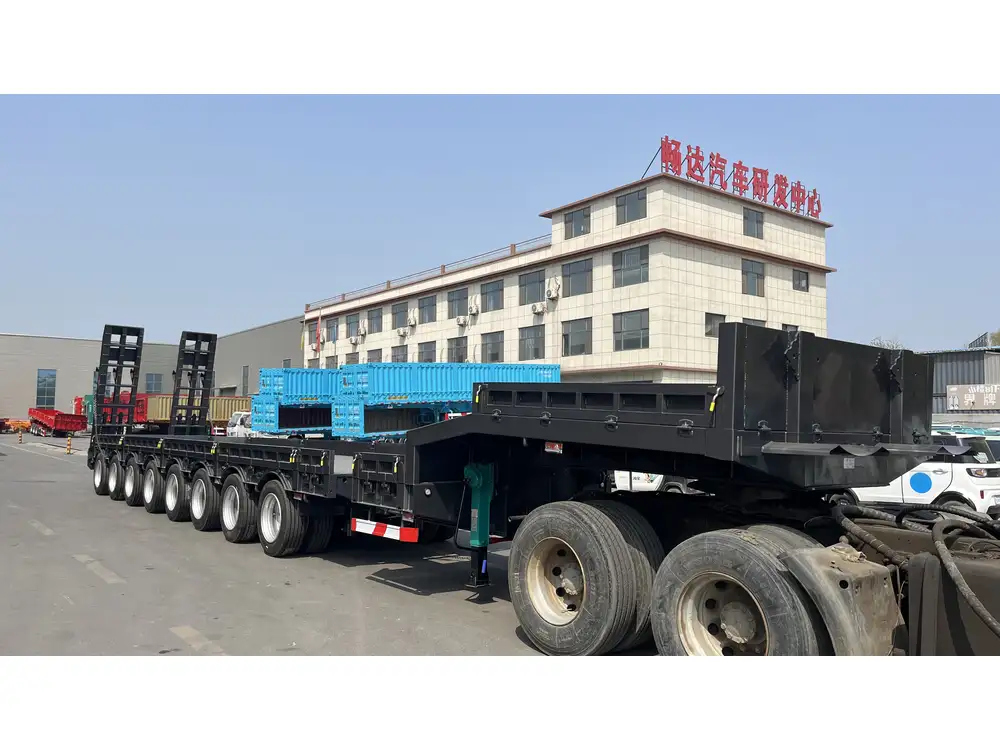Introduction to Semi-Trailers
In the realm of freight transport, semi-trailers hold a pivotal role. Their significance extends far beyond mere functionality; they embody a sophisticated engineering solution designed to optimize the movement of goods across vast distances. A semi-trailer is a type of trailer characterized by its design, which allows a significant portion of the trailer’s weight to be supported by a truck or tractor unit, rather than the trailer’s own wheels. This design innovation facilitates greater load capacity and stability on the road, ultimately improving transportation efficiency.
Defining Features of Semi-Trailers

Construction and Design
Semi-trailers are modular, meaning they can be detached from the tractor unit without losing cargo. Key elements of their construction include:
- Axle Configuration: Semi-trailers often come with tandem, tri-axle, or even quad configurations to support heavier loads while maintaining road safety.
- Frame Materials: Aluminum and steel are the most common materials used, each offering a balance between strength and weight.
- Bed and Floor Types: The bed can be flat, enclosed, or equipped with specialized containers to safely secure various types of cargo.
Table: Common Semi-Trailer Configurations
| Trailer Type | Typical Uses | Axle Count | Height |
|---|---|---|---|
| Flatbed | Construction materials, machinery | 2-4 | Variable |
| Dry Van | General freight, consumer goods | 2-3 | 13.5 ft |
| Refrigerated | Perishable goods, pharmaceuticals | 2-3 | 13.5 ft |
| Lowboy | Heavy equipment, oversized loads | 2-3 | 18-24 inches |
Load Capacity Variations
The load capacity of semi-trailers varies widely, typically ranging from 20,000 to 40,000 pounds depending on the specific configuration and materials. This weight capacity must be carefully considered, as exceeding it can lead to significant legal and safety ramifications, including fines and increased accident risks.

Types of Semi-Trailers
An understanding of various types of semi-trailers helps potential users select the right equipment for their transport needs. Below, we outline several prominent designs:
1. Flatbed Trailers
Flatbed trailers are versatile options for transporting goods that are too large or awkwardly shaped for enclosed trailers. They facilitate quick loading and unloading since they lack side walls and a roof.
2. Dry Van Trailers
Ideal for transporting consumer goods, dry van trailers feature rigid walls and a roof, providing protection against the elements. Their enclosed nature makes them suitable for goods requiring weather protection.

3. Refrigerated Trailers (Reefers)
Critical for transporting perishables, refrigerated semi-trailers maintain specific temperature settings. This is vital for foods, pharmaceuticals, and other temperature-sensitive items.
4. Lowboy Trailers
Designed for heavy equipment transport, lowboy trailers offer a low bed height, allowing the transportation of tall machinery without needing special permits.
The Importance of Regulations

Weight and Size Regulations
In the U.S., the Federal Motor Carrier Safety Administration (FMCSA) sets strict regulations on weight and size limits for semi-trailers. Understanding these regulations is imperative for compliance and safety:
- Standard Dimensions: Many states enforce a maximum width of 8.5 feet and a maximum height of 13.5 feet.
- Weight Limits: The typical highway weight limit is 80,000 pounds, including the tractor and trailer combined.
Safety and Maintenance Regulations
Beyond weight limits, safety inspections and maintenance schedules are mandatory for semi-trailers. Regular checks can prevent accidents and comply with local, state, and federal regulations.
| Regulatory Aspect | Details |
|---|---|
| Regular Inspections | Required every 12 months |
| Maintenance Checks | Brake system, lights, and tires must be assessed regularly |
| Licensing and Permits | Necessary for specific cargo types or oversized loads |
Semi-Trailers and Their Contribution to the Economy

Economic Impact
The world of semi-trailers is intricately tied to economic frameworks. As a manufacturer, your contribution goes beyond mere vehicle production; it supports entire supply chains and bolsters economic growth. With efficient transport solutions, businesses can:
- Reduce Operational Costs: Semi-trailers allow for optimized freight movements, minimizing fuel consumption and labor hours.
- Improve Shipping Times: Enhanced logistics capabilities offered by modern semi-trailers result in quicker deliveries, meeting consumer demands promptly.
- Adapt to Market Demands: The flexibility in semi-trailer designs enables businesses to pivot quickly in response to changing market conditions.
Key Industry Statistics
- Freight Transport Growth: The demand for freight transport has surged by an estimated 25% over the last decade, emphasizing the need for efficient semi-trailer designs.
- Average Cost of Transport: The average cost of transportation per mile has seen gradual increases, driven largely by fuel prices and regulatory changes.
Challenges in the Semi-Trailer Sector
The semi-trailer industry faces various challenges that require careful navigation to ensure sustained growth and efficiency.

1. Fuel Prices and Economic Fluctuations
Freight transportation is heavily influenced by fuel prices, impacting operating costs. Semi-trailer manufacturers must promote designs that enhance fuel efficiency, such as aerodynamic trailers.
2. Regulatory Compliance
Navigating an evolving landscape of regulatory requirements poses challenges. Staying current with changes in laws, emissions standards, and safety regulations is crucial for manufacturers and operators alike.
3. Technological Advancements
As technology integrates into the transport industry, manufacturers must adapt their designs to incorporate GPS tracking, sensors for load monitoring, and other smart technologies to remain competitive.

List: Emerging Technologies in Semi-Trailer Design
- Telematics Systems: For real-time tracking and data analysis.
- Aerodynamic Enhancements: To reduce drag and improve fuel efficiency.
- Smart Load Sensors: For weight monitoring and stability improvement.
Conclusion
In conclusion, the semi-trailer is not merely a vehicle for transporting goods; it is an integral component of the supply chain that underpins a thriving economy. Understanding the multifaceted nature of semi-trailers—from their engineering and design to their economic ramifications—enables businesses to leverage this knowledge effectively. By investing in the right semi-trailer solutions, operators can improve efficiency, reduce costs, and ultimately enhance their service offerings.
As the demand for semi-trailers continues to evolve and expand, so does the opportunity for innovation in design and application. Whether you are considering your first purchase or looking to expand your fleet, understanding what a semi-trailer truly represents is critical for making informed decisions that will drive both operational success and economic growth.



